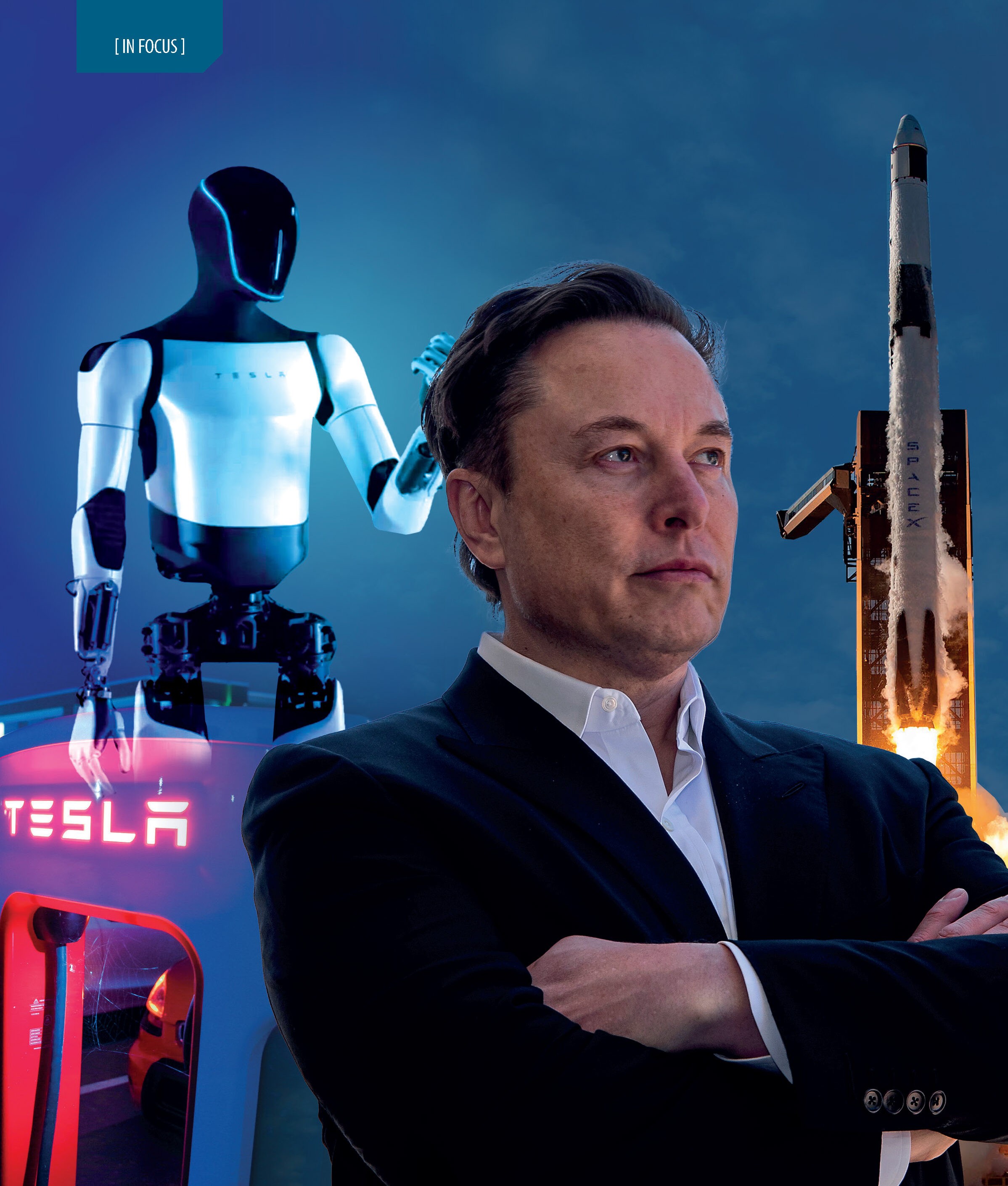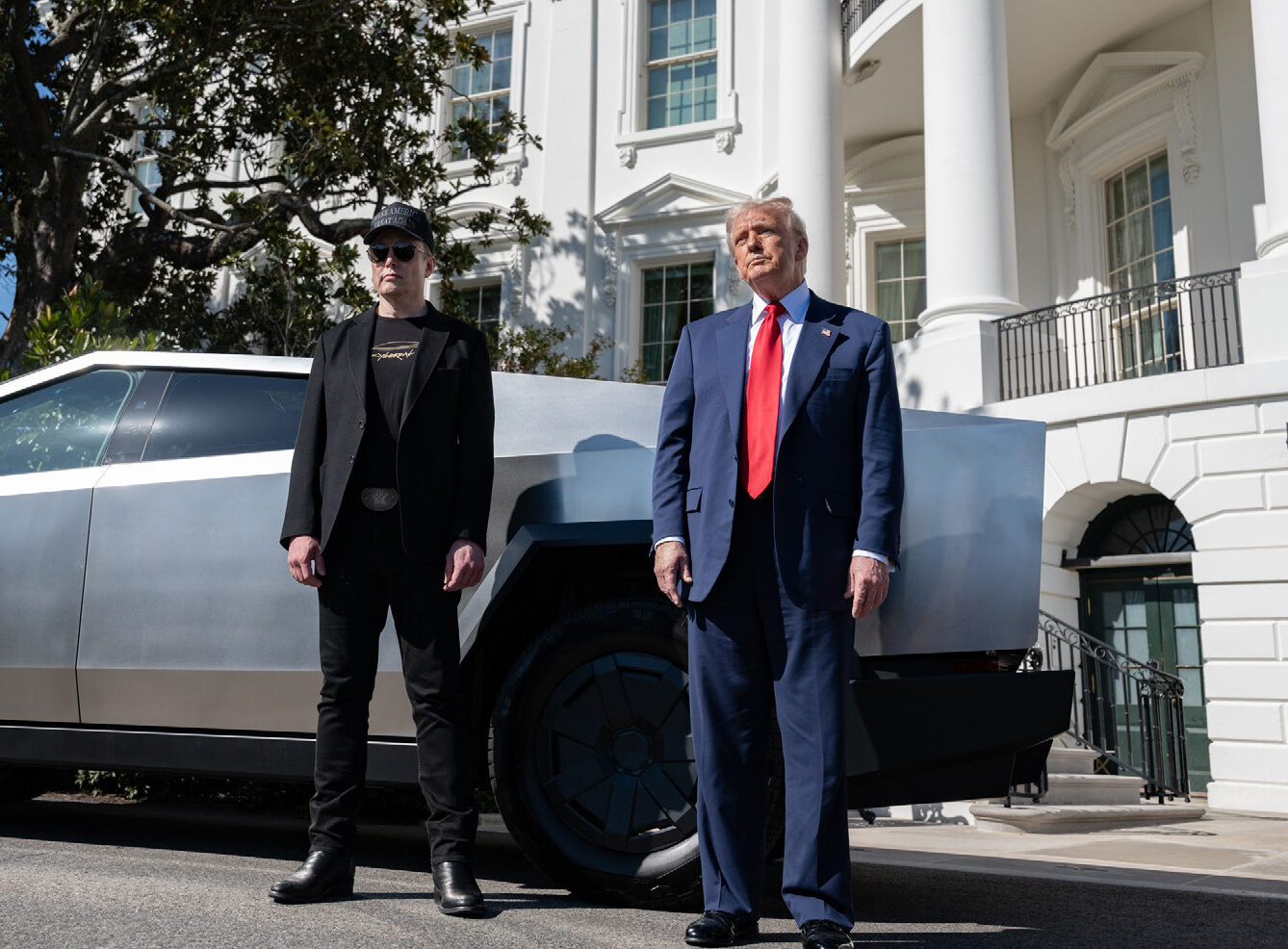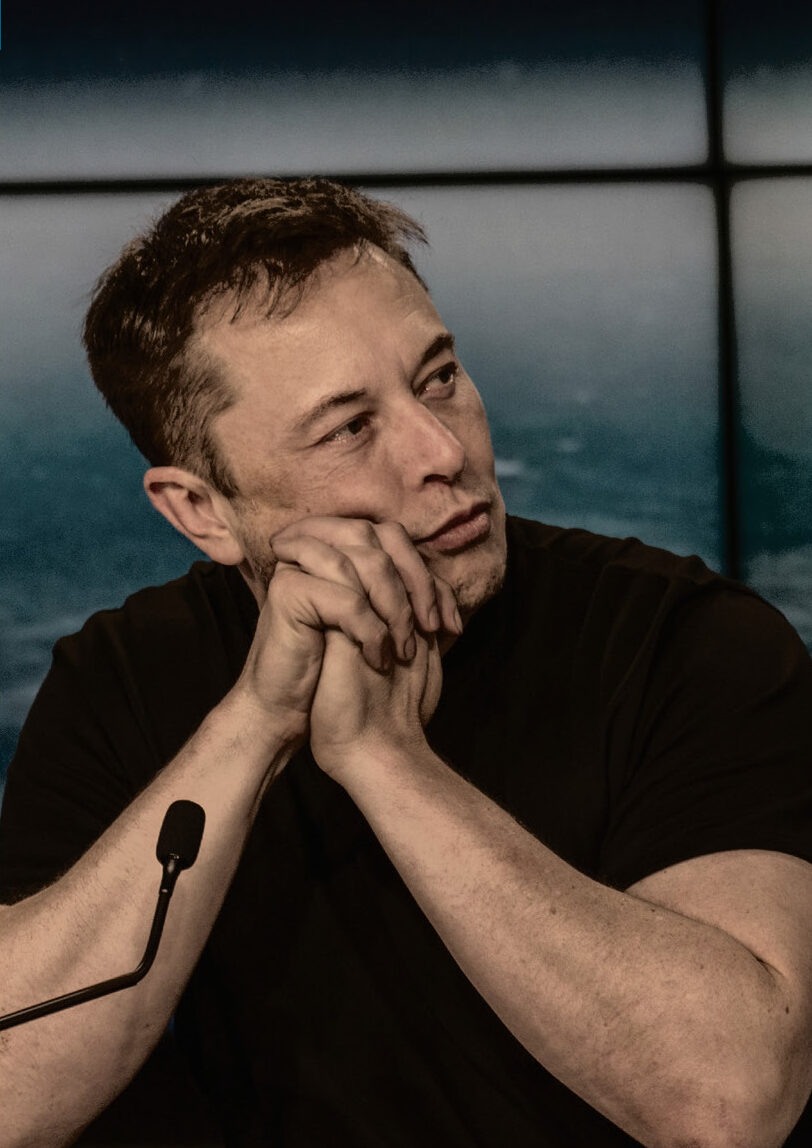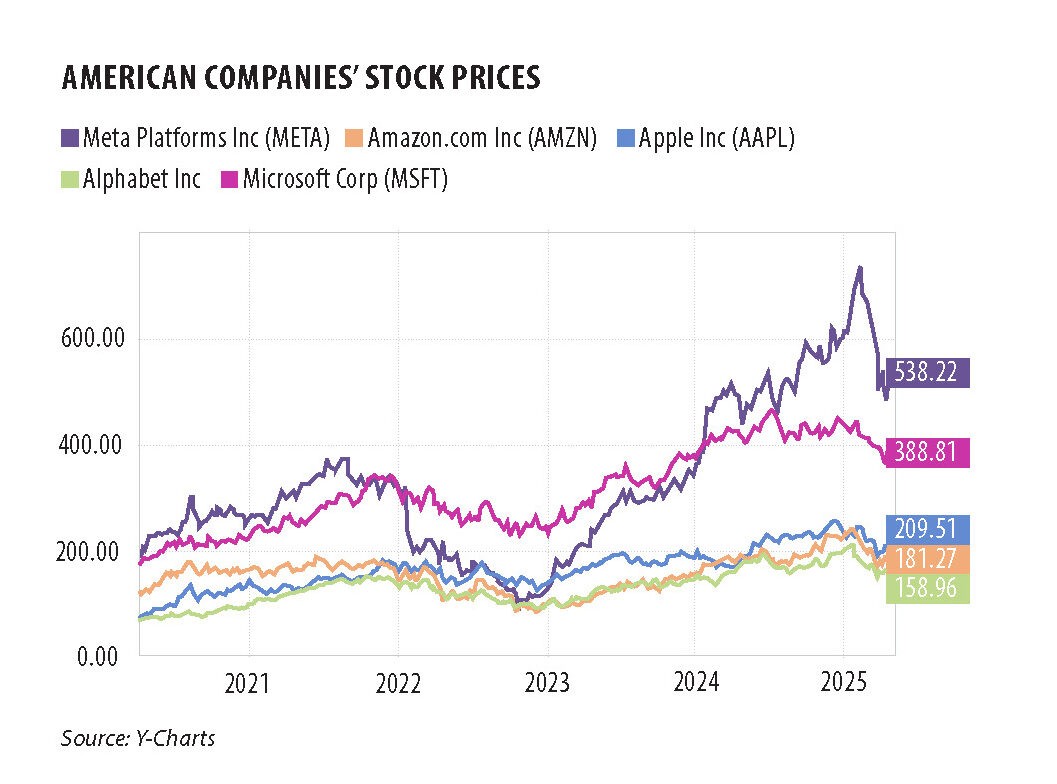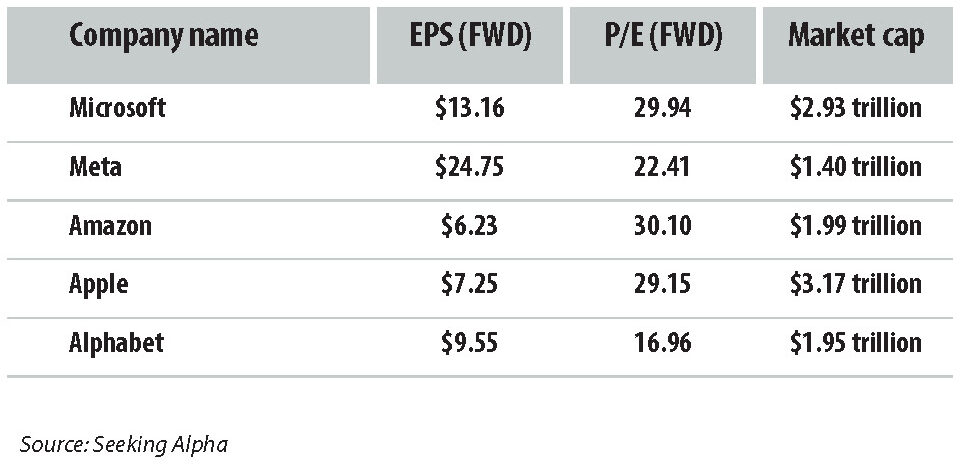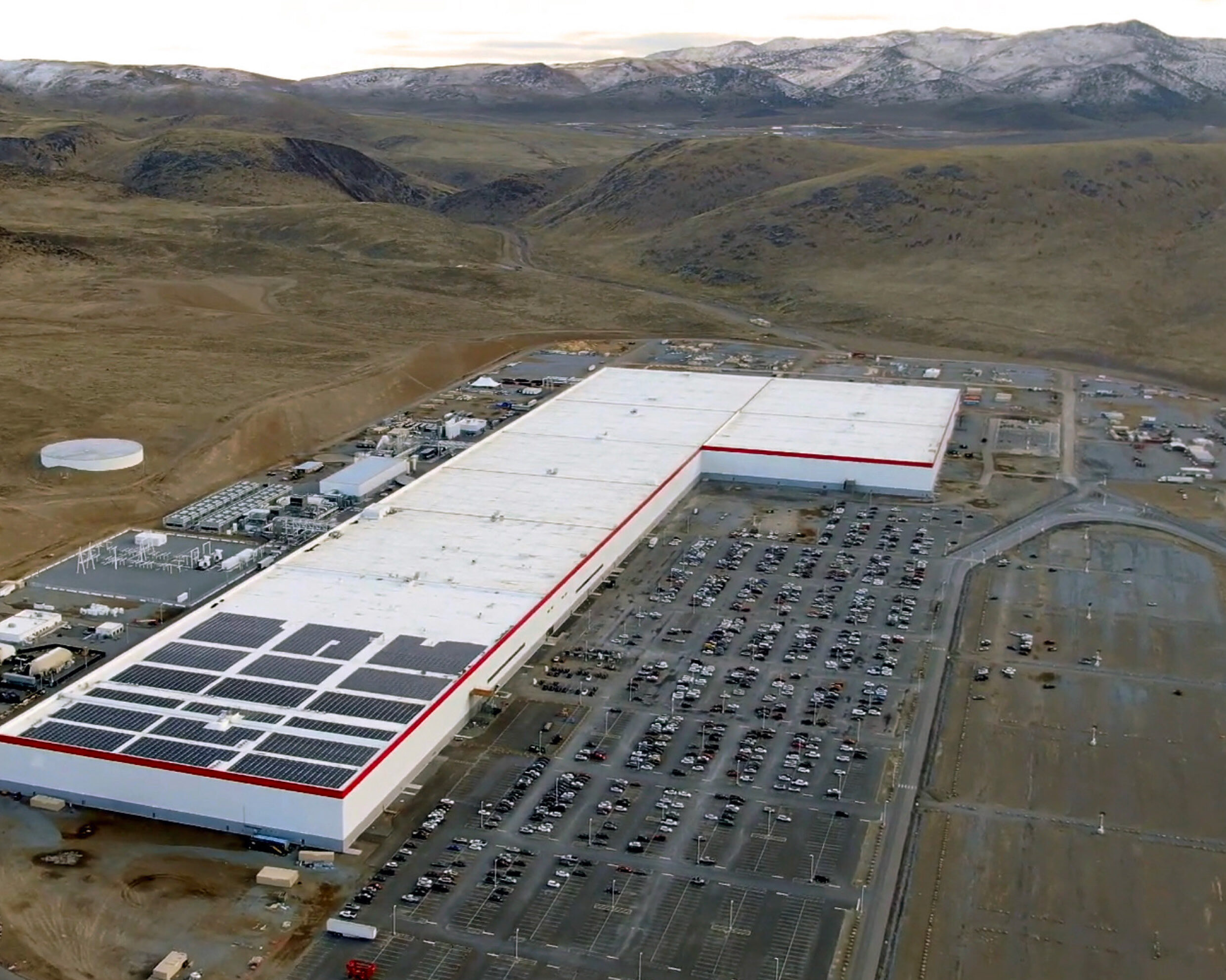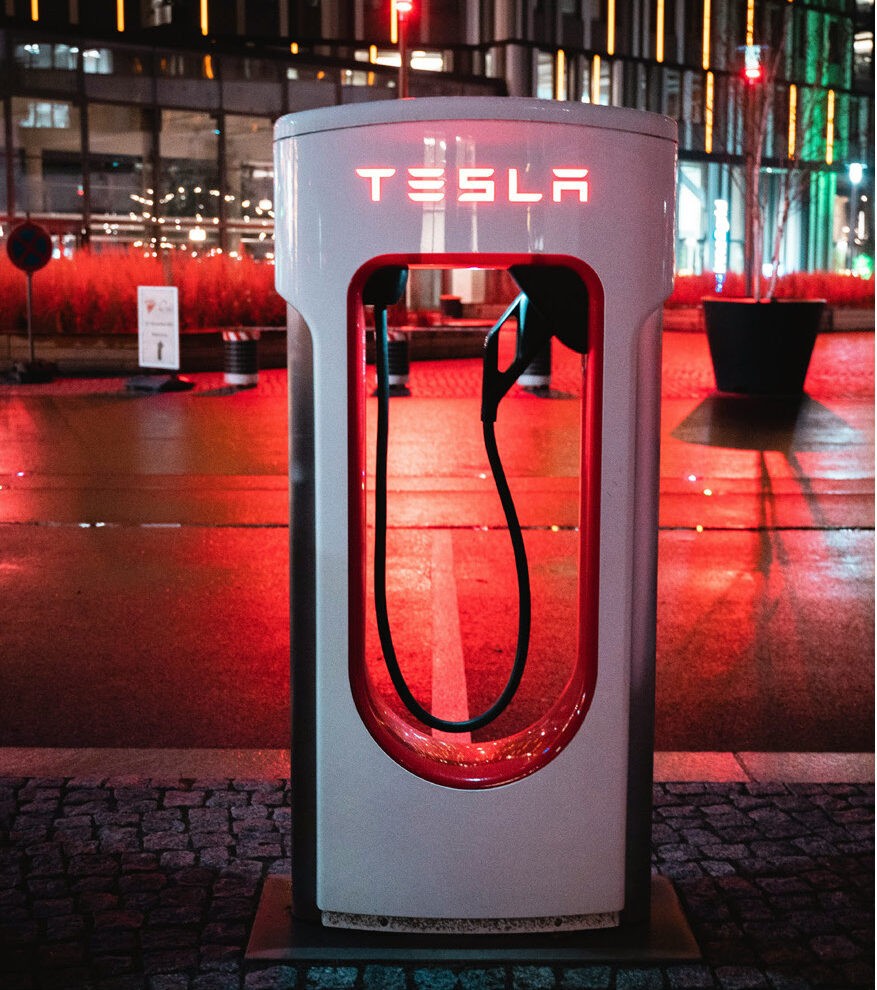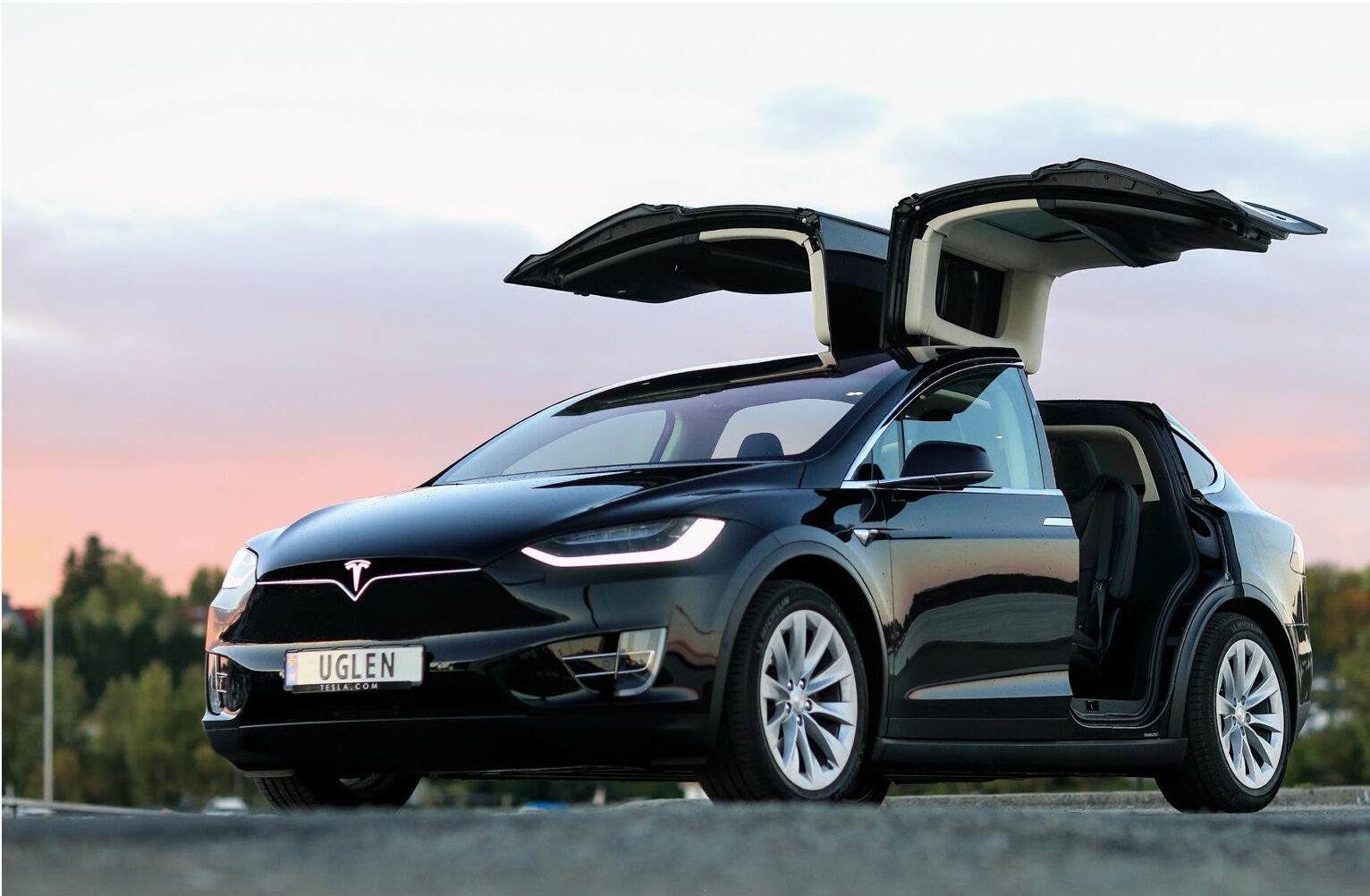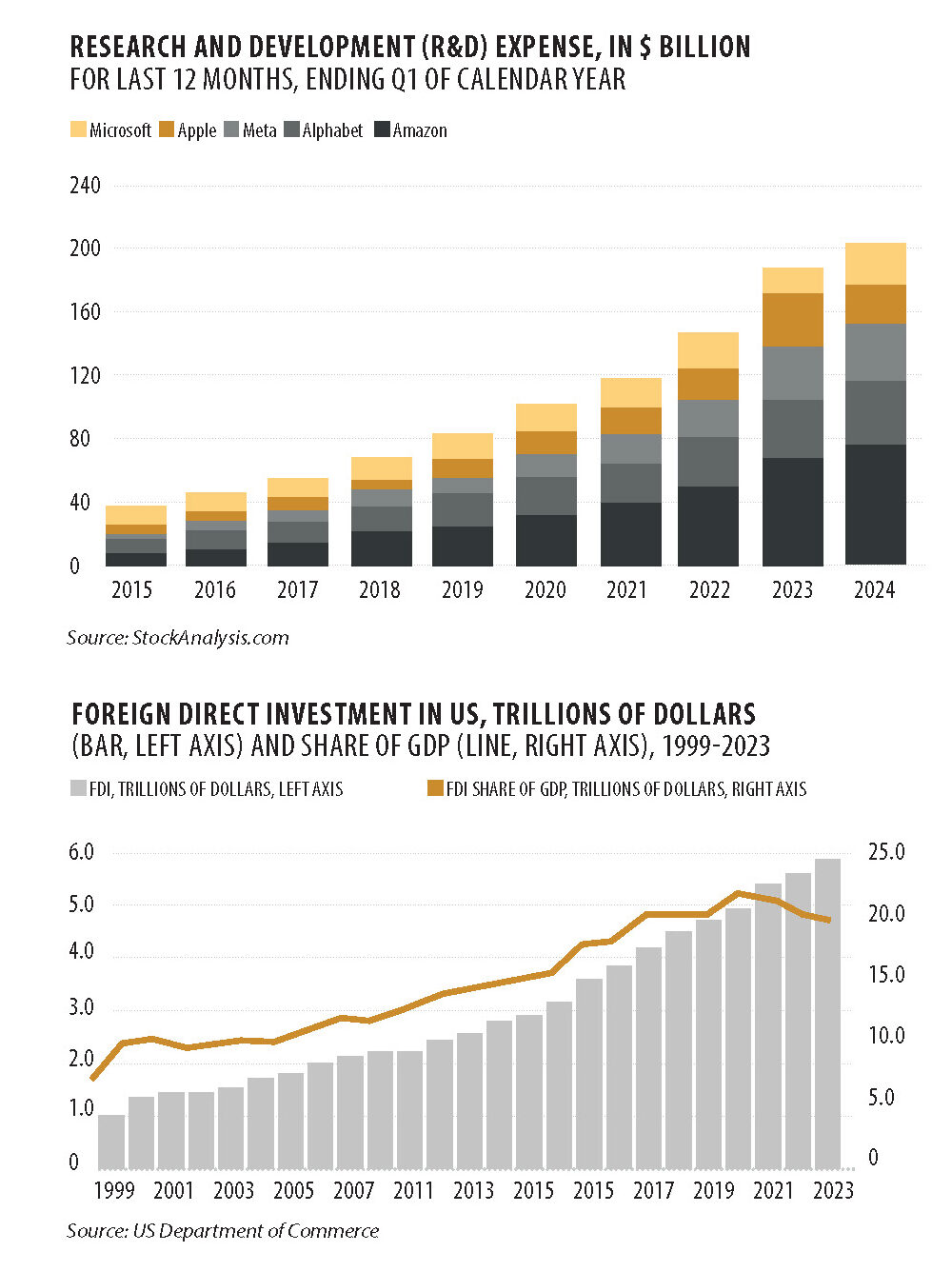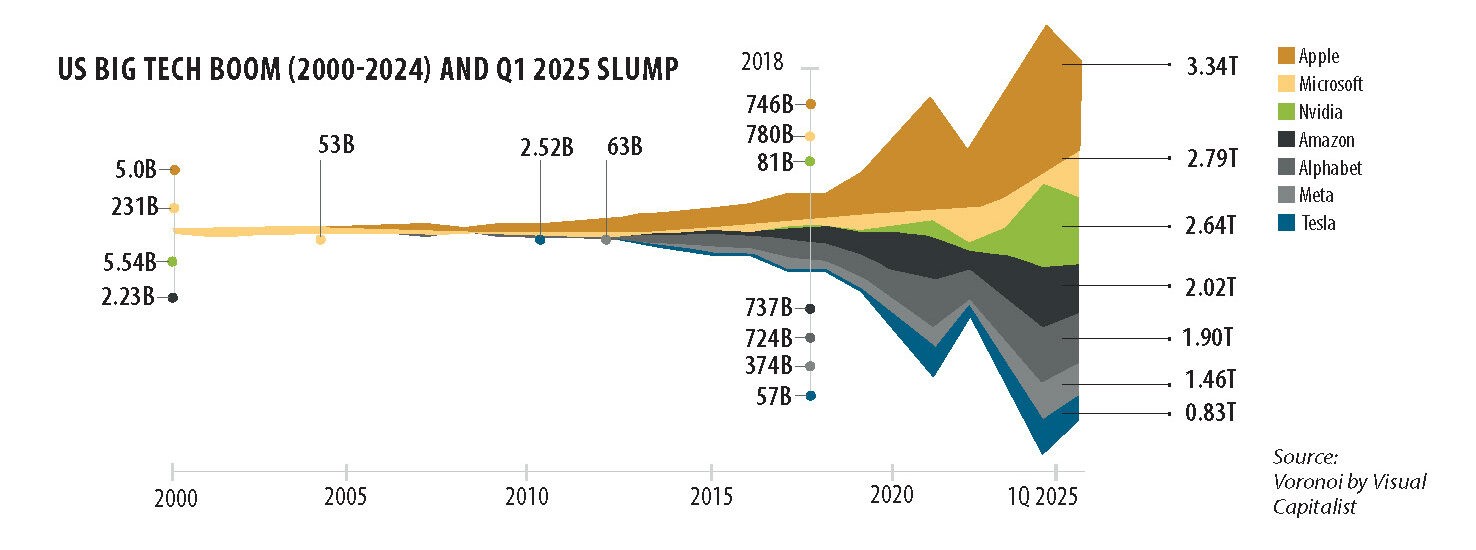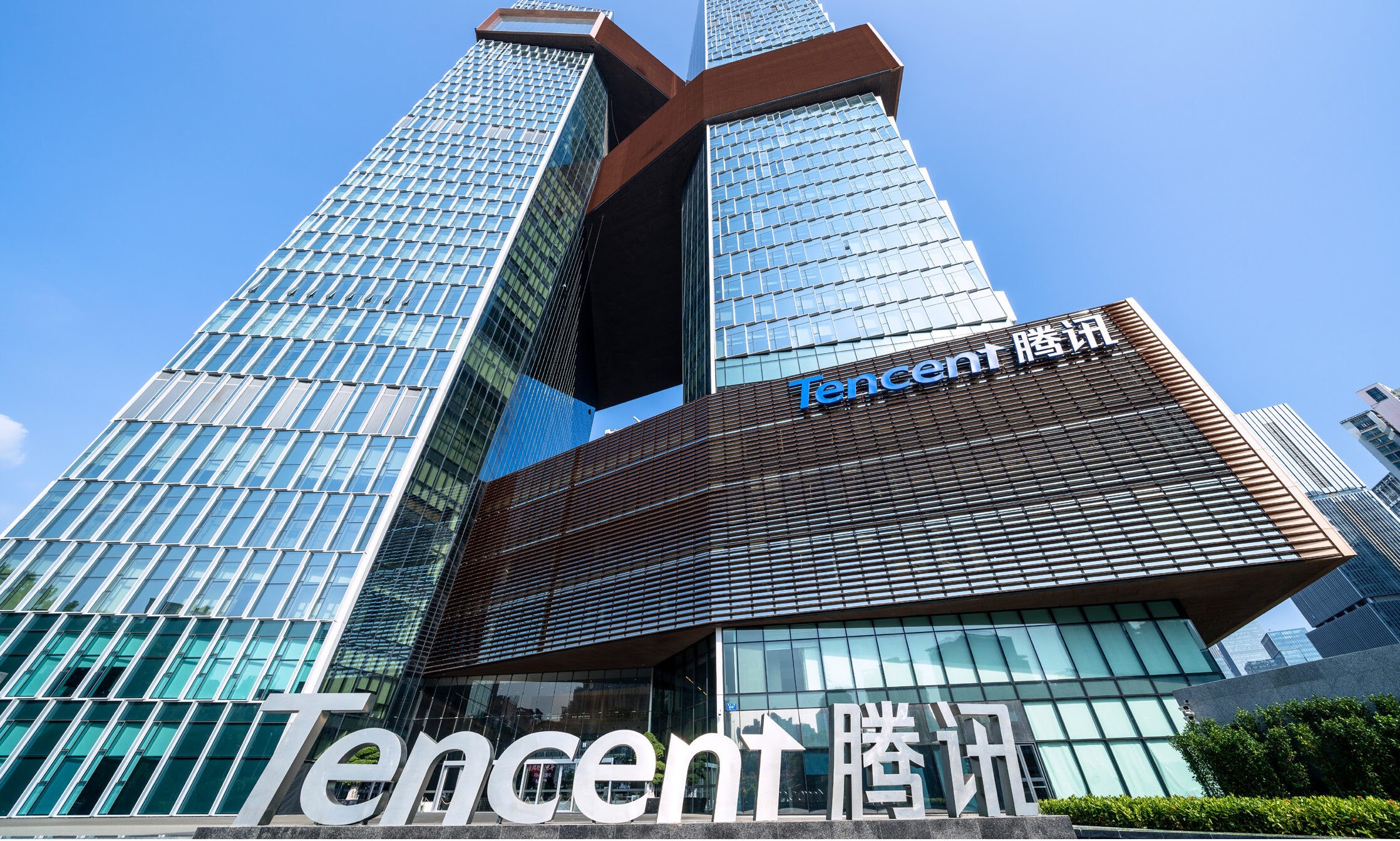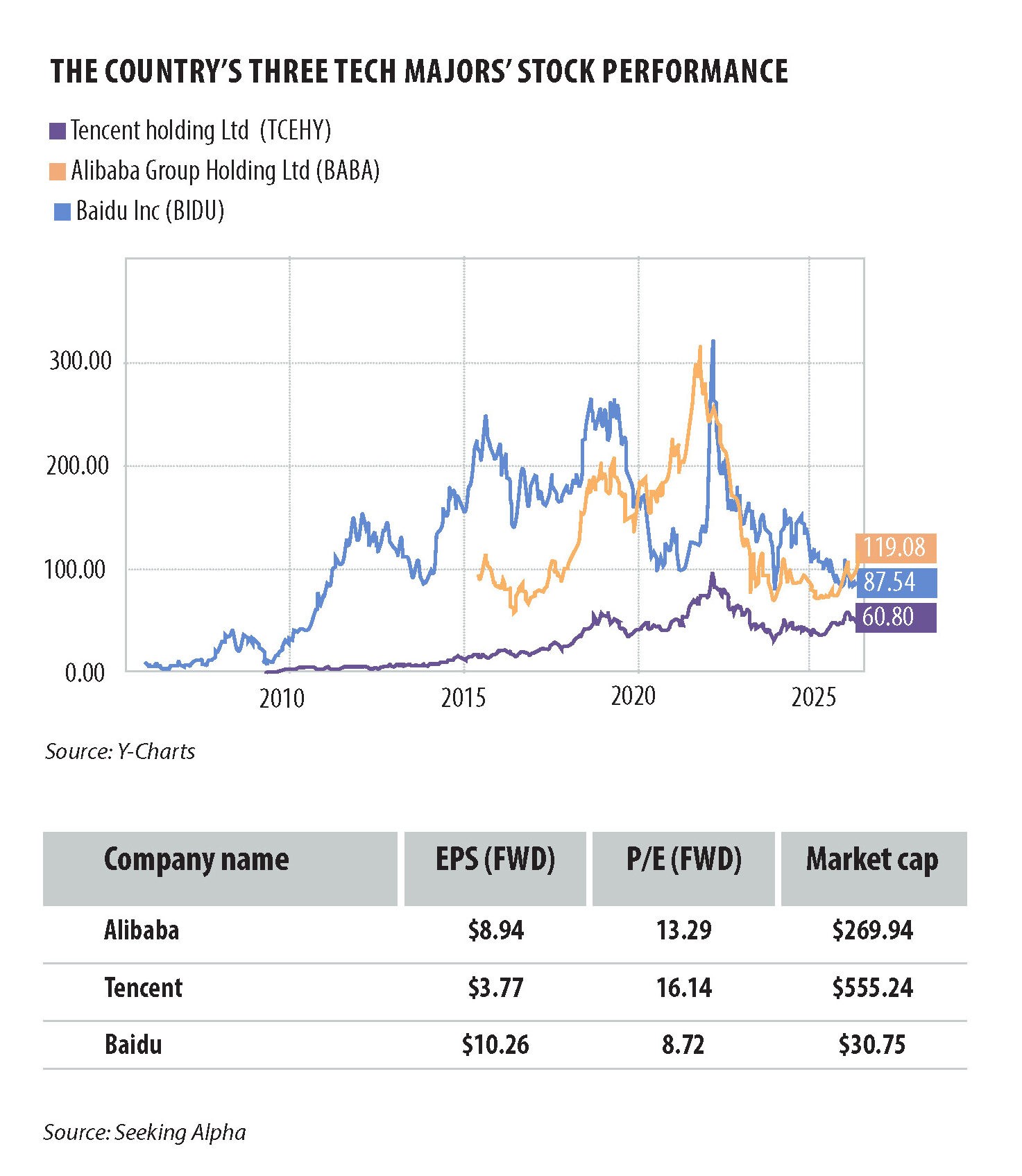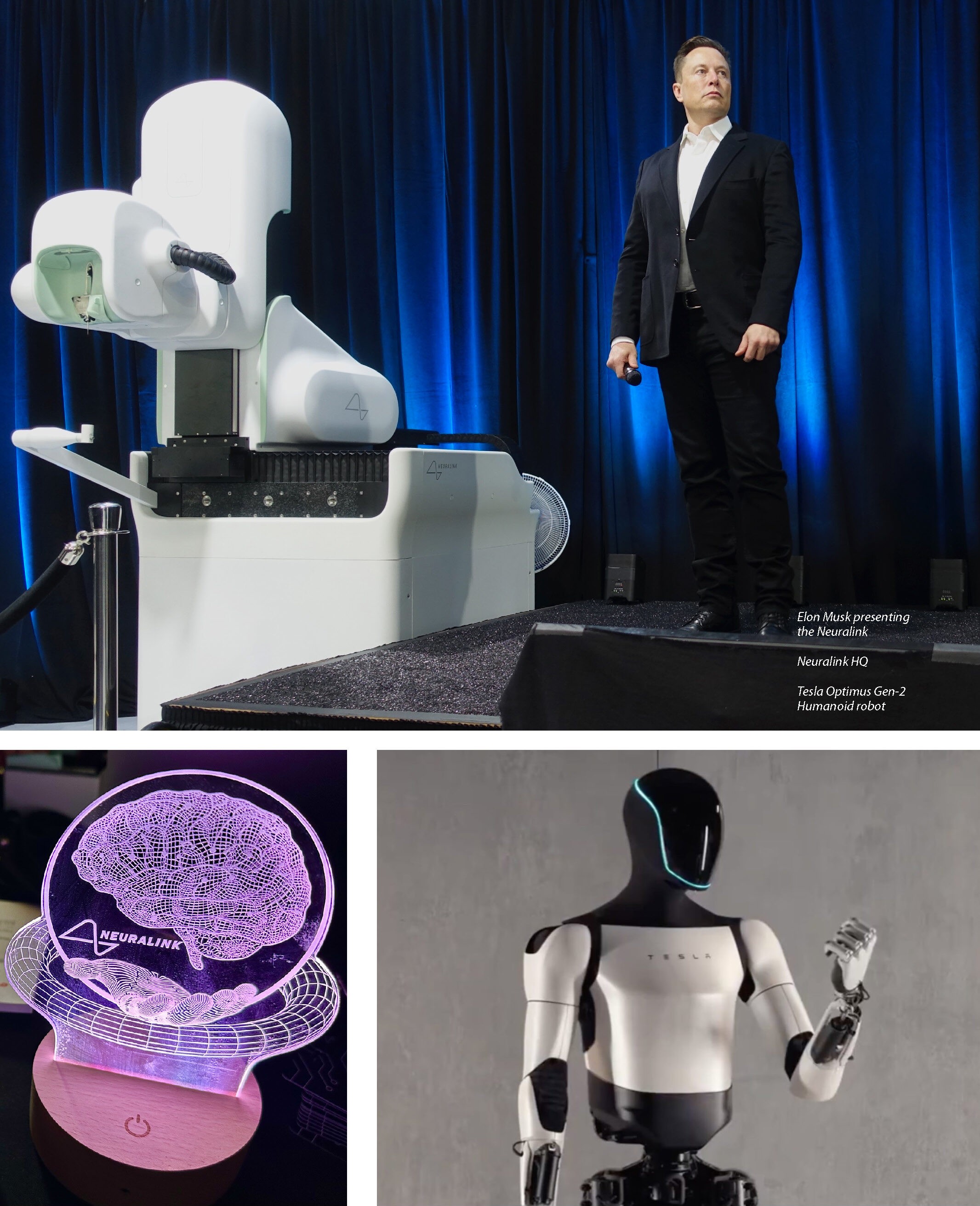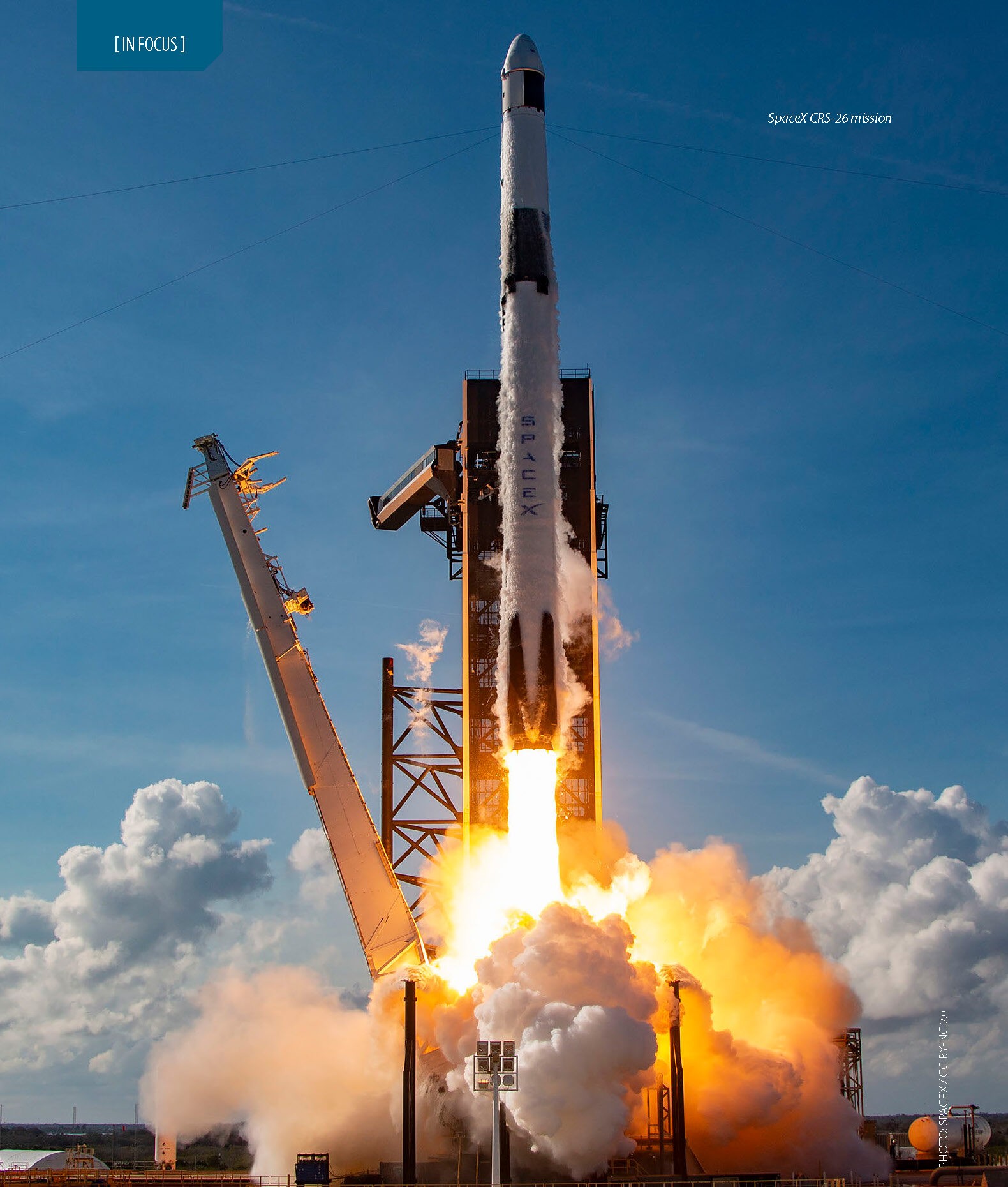Big tech companies, especially the Magnificent 7 (Alphabet, Amazon, Apple, Meta Platforms, Microsoft, NVIDIA, and Tesla), have long been the most attractive and yet most overvalued investment assets. The AI boom has only made the rally for high-tech stocks, especially Nvidia’s (NVDA) intensify. However, right now in 2025 Big Tech is facing significant political and economic risks due to the trade war the US is having with many countries and China in particular. But before the trade war intensified, Tesla’s stock (TSLA) faced substantial selling pressure because its charismatic CEO Elon Musk became closely associated with President Trump and his politics. Tesla’s Elon Musk became the head of the US Department of Government Efficiency (DOGE). So, he is now close to President Trump’s administration. Tesla’s stock has been facing downward pressure because some investors disapprove of Musk’s and Trump’s political views. At the same time, Musk has become the symbol of deglobalization reforms initiated by Donald Trump.
ELON MUSK: A HERO, A POLITICIAN OR AN INNOVATOR?
Elon Musk, the world’s wealthiest person, cofounded PayPal, the electronic payment firm. In 2002 he founded SpaceX, a company producing rockets and spacecraft. Also, he was a major early founder of Tesla, the leading electric cars and batteries manufacturer. He officially became the corporation’s chief executive officer in 2008. Moreover, in 2016 Musk cofounded Neuralink, a neurotechnological company. Tesla’s CEO also bought the social media platform Twitter in 2022 and renamed it to X in 2023. So, apart from being a businessman, Musk is also a significant opinion leader.
During the 2024 presidential campaign in the US Elon Musk was one of Donald Trump’s most significant endorsers. He donated tens of millions dollars to finance the Republican’s win to the White House. Some market analysts and political observers might be wondering why. After all, Musk used to finance the Democratic party before, including Hillary Clinton and Barack Obama during their presidential campaigns.
Musk’s support of Trump is due to their similar approaches to economic deregulation as well as similar attitudes to gender ideology and transgender rights. In plain terms, they have positive attitudes towards capitalism and conservative moral values.
Elon Musk is supportive of government deregulation, particularly in the area of space exploration. In the past, Musk had argued that too much regulation hinders innovations. This is the approach that Trump broadly supports.
Another reason why Musk endorsed Trump’s campaign Trump was the President’s expected tax cuts. During his first term, Trump lowered business taxes. Moreover, Trump’s suggested to appoint Musk as the “secretary of cost-cutting”, which he later did. During one of his Fox News appearances, Trump said “He’s dying to do this.” His role as the head of DOGE allows Musk to benefit from a special tax cut worth tens of billions of dollars.
Elon Musk-led DOGE deleted 3.2 million names from the Social Security database. All of these listed citizens were 120 years or above
Also, Elon Musk is Trump’s ally for political reasons. As a Republican, Trump has a more negative approach towards transgender issues. Elon Musk’s son decided to change his gender identity when he was a teenager. The family lived in California at the time. Musk said that a new Californian law requires schools to keep parents in the dark about their children’s gender identities changes. So, in 2020, amid the Covid pandemic, 16-yearold Xavier Alexander Musk became a trans but did not inform his father Elon Musk. This made the famous entrepreneur exit California and relocate his business facilities to Texas.
“Because of this law and the many others that preceded it, attacking both families and companies, Space X will now move its HQ from Hawthorne, California, to Starbase, Texas,” Elon Musk wrote.
Elon Musk-led DOGE deleted 3.2 million names from the Social Security database. All of these listed citizens were 120 years or above Musk also relocated X’s facilities (formerly known as Twitter) to Texas. Also, Musk’s Tesla moved its corporate headquarters from Palo Alto in California to Austin, Texas in 2021. At the time, Musk criticized California’s tax policies and regulation.
As I have mentioned above, Musk has become the head of DOGE department and therefore responsible for ensuring the federal budget’s efficiency. An example of his reform is cleaning up the Social Security database. In March, Elon Musk-led DOGE deleted 3.2 million names from the Social Security database. All of these listed citizens were 120 years or above. They were marked as dead by Musk’s DOGE team. However, before the cleanup all these people used to receive social security benefits, thus pressurizing the US national budget. It is just one example of Elon Musk’s cost-cutting. He plans to decrease the US government’s bureaucracy and cut the government’s expenses further.
Quite recently, the DOGE wrote: “In the past 3 weeks, the USDA terminated 420 wasteful grants totaling $2.5B in award value and $2.3B in savings, including: $150k for “gender lensed curricula designed to be transdisciplinary in the food, agriculture, natural resources and human sciences” $100k for “climate””
Since the start of Donald Trump’s term, Elon Musk’s TSLA has lost a substantial part of its capitalization. TSLA stock’s reached an all-time high of almost $500 per share at the very end of 2024. Right now it is trading at about 50% of the value as I am writing this. A decrease in Tesla’s capitalization was mostly due to Elon Musk’s increased political activity. Also, due to his proximity to Trump and his work in the US government, he might have less time of running his core business, including Space X, X and Tesla.
However, as a businessman, Elon Musk cut his companies’ production costs by relocating their facilities from California to Texas. The labor and taxation costs are much higher in California than Texas.
MUSK – A PATRIOTIC ENTREPRENEUR
In very plain terms, Elon Musk is an anti-globalist unlike many entrepreneurs based in California’s Silicon Valley. Many US businesses have relocated their production facilities to other countries where production costs are much lower in comparison to the US. For example, Apple (AAPL) has moved most of its factories to China where production costs are much lower in comparison to the US.
Also, if we see high-tech companies’ mission statements, Facebook’s plan is “to connect the world”, Google’s mission is “to organize all of the data in the world and make it accessible for everyone in a useful way”, we will see that their main aim is to go global. Musk, as I have mentioned above, locates a substantial part of his production facilities in the US and therefore also pays taxes in the US.
Moreover, unlike heads of highstech firms, he is rather right-wing conservative. Most high-tech entrepreneurs with headquarters based in California support liberal political ideas. For example, as I have mentioned above, Elon Musk does not support the transgender agenda and has been endorsing Donald Trump. In contrast, the leading high-tech firms have been supporting the Democratic Party and their values. A good example of this happened during the Covid-19 pandemic and during Joe Biden’s election campaign when the BLM (Black Lives Matter) movement was on a rise. The BLM movement supported by the Democratic Party and also the Democratic candidate Joseph Biden was also partly endorsed by high-tech companies like Amazon. Moreover, the leading high-tech companies even refused to supply the US police with surveillance technologies, like cameras. Why is that? Well, according to BLM’s vision statement,
“In pursuing liberation, we envision a future fully divested from police, prisons, and all punishment paradigms and which invests in justice, joy, and culture.”
So, the decision of many high-tech corporations not to co-operate with the US police was a political one. Musk, meanwhile, is a Republican, as I have mentioned above.
Moreover, Elon Musk has been running his companies more like corporate charities. By this I mean that all of Tesla’s patents are opensourced. Interestingly, Google and Facebook have also made some of their patents accessible to the public. But as concerns Tesla, it is possible for anyone to use their technologies. So, all people can make their own electric cars and sell them, while Tesla would not sue them. All Musk seems to care about is his mission to replace all the vehicles with electric cars. Some of his famous quotes devoted to innovation are:
“When Henry Ford made cheap, reliable cars, people said, ‘Nah, what’s wrong with a horse?’ That was a huge bet he made, and it worked.” — Musk seems to believe in his EV ideas the way Henry Ford did in accessible cars.
“Failure is an option here. If things are not failing, you are not innovating enough.” — Elon Musk knows his innovative ideas could turn out to be loss-making but he is prepared to accept and cope with the consequences. This approach did pay off, given the fact he became the head of several large companies and the richest person in the world.
“I don’t create companies for the sake of creating companies, but to get things done.” — Obviously, just establishing businesses does not make sense.
“I could either watch it happen or be a part of it.” — If Musk did not innovate, somebody else would, given the modern technological progress.
“Starting and growing a business is as much about the innovation, drive, and determination of the people behind it as the product they sell.” — I am absolutely sure that thanks to Musk’s charismatic personality, Tesla’s products and its stock have been so popular among both customers and shareholders for years.
“Being an entrepreneur is like eating glass and staring into the abyss of death.” — Being an entrepreneur is obviously a great risk very few people are willing to take. Organizing resources or factors of production of land, labor and capital requires time, effort, skills and in the case of Musk a lot of financial resources because
“I always invest my own money in the companies that I create. I don’t believe in the whole thing of just using other people’s money. I don’t think that’s right.”
AMERICAN AND CHINESE BIG TECH
As can be seen from the diagram above, the five companies did sell off after the start of 2025. However, Microsoft’s, Amazon’s, Apple’s and Alphabet’s stocks only corrected slightly, while Meta’s stock price depreciated substantially. In January 2025, after Trump’s inauguration, the US stock market started losing its capitalization due to growing trade tensions with China. That is why the tech sector started depreciating. However, Meta’s stock price fell down more than others because of its recent earnings performance. Even though Meta reported high Q4 2024 profits, its Q1 2025 outlook has disappointed investors. According to analysts, the corporation’s advertising revue — the center of Meta’s business — is expected to show signs of slowing amid economic uncertainty. Moreover, investors believe Meta’s high capital expenditures — forecasted at $60-$65 billion in 2025 for AI infrastructure — could pressurize its cash flow if sales growth decreases. So, to summarize, the entire US stock market corrected and so did the overvalued and overpopular high-tech sector but META’s stock depreciated even more.
Gigafactory Nevada (also known as Giga Nevada or Gigafactory 1) It is the largest (by land area) and the first Tesla Gigafactory in the world.
Tesla Supercharger. The Tesla Supercharger network is an electric vehicle fast charging network built and operated by American vehicle manufacturer Tesla, Inc.
Tesla Model X 75Dw
Also, worth noting that the Big Tech’s research and development expenses have stopped increasing as much as they used to. The annualized growth rate of Big Tech used to be 22% per year. The increase between 2023 and 2024 totaled merely 7%.
Foreign direct investment in the US also does not seem to increase at a very high rate. As can be seen from the diagram on the left, the FDI — both in trillions of dollars and as a share of the GDP — keeps slowing down.
To make the decrease of investors’ interest even more obvious, I have also decided to include the graph summarizing the performance of all the companies in the Magnificent Seven over the last 24 years. After a magnificent boom, the market caps of the whole sector started decreasing just in the 1st quarter of 2025.
But how about the Chinese stock market and its high-tech sector? The graph next page shows the country’s three tech majors’ stock performance.
ByteDance’s stock is not present on the graph above because it is not listed on the stock exchange.
Chinese high-tech companies Tencent (TCEHY), Alibaba (BABA), ByteDance and Baidu (BIDU) have all struggled between 2020 and 2021 as the state administration for market regulation (SAMR) issued the anti-monopoly guidelines for the platform economy. This pressurized the entire high-tech market. As could be seen from the diagram, Baidu’s, Alibaba’s and Tencent’s stock prices have not recovered from the shock they experienced in 2021. All of the tech firms, especially the size of Alibaba and Tencent, were affected. Even though, their sizes in themselves are not an offence, the Chinese government tried to prevent these corporations from using scale to become monopolies. Doing so would allow them to gain unfair commercial benefits, while squeezing small and medium-sized business out both in terms of market presence. That is the reason for the Chinese government’s intervention.
Building of TENCENT company – Twin-skyscrapers headquarters located at Shenzhen Bay Start Up Plaza in Nanshan business district
The three corporations I have mentioned above used to be worth several times more than they are worth now, making them close to American corporations in terms of market capitalization. At the same time, their sales and earnings figures have not declined substantially. So, the Chinese high-tech sector seems to be trading at favorable valuations.
Moreover, after Trump’s administration started the tariff war, the Chinese high-tech sector did not depreciate in value the way the US high-tech sector did. So, trade restrictions do not seem to affect China’s high-tech market, at least for now. Rather it is the American high-tech sector, especially Apple and other companies with China-based production facilities, that become most affected by Trump’s tariffs. Chinese businesses, in contrast, do not have their manufacturing plants in America. So, they are not as affected, it seems.
TECHNOLOGICAL LANDSCAPE IN THE COMING YEARS
Here are the leading technologies that are likely to substantially influence the world in the years to come:
• Artificial intelligence
Artificial intelligence technologies will likely be integrated into everything we do by 2034. It is likely AI will drive our cars, facilitate medical treatment and generally raise our productively.
Thanks to natural language processing progress, by 2034, it is likely we will have natural, flowing conversations with machines. Also, thanks to mature behavioral analytics, our personal devices will become much more competent at understanding what we want and even guessing what will make us happy. It is also likely we will see machines doing warehouse work, manufacturing and constructing.
But what does it actually mean in the long run? AI technologies could mean an utopia where no one works and AI workers give us everything we need. But it rather seems to be a dystopia where most employees get redundant. The beneficiaries of this would essentially be the technologically-enabled elite. At the same time, there is still uncertainty about the future.
• Digitalization
More and more of our time is spent online, using the Internet and exploring virtual worlds. As technology becomes more accessible to poor people in developing countries, it is likely the digitalization trend will only continue.
The danger of this trend is that in the eyes of the younger generations, the difference between the online and the offline worlds may start to fade, thus making lives more unpredictable, especially interpersonal communication.
Some predict, however, that in the coming years younger generations could rebel against this. The so-called “generation alpha” who are all children today — might value offline time and get more attached to physical reality.
• Healthcare can get transformed by biotechnology
Discoveries and investment into areas like genetic engineering, personalized medicine, and stem cell research will likely substantially affect the way we provide medical assistance for people in 2034.
There is also a possibility that there will be advances in gene editing technologies like CRISPR-Cas9. These may make it possible to correct many genetic diseases before human birth, thus reducing the prevalence of many hereditary diseases, including but not limited to muscular dystrophy or cystic fibrosis. These technologies may go as far as to even decrease many people’s genetic predisposition to negative health consequences of high cholesterol or blood pressure. The effects of these should only be positive, healthier and longer human lifespans. Likewise, regenerative medicine, fueled by research into stem cells, could mean many parts of the body will be “regenerated”, thus easing the organs shortages available for transplantations. Moreover, these new technologies would also ease concerns over transplant rejections arising from the immune system’s reaction.
AI technologies could mean an utopia where no one works and AI workers give us everything we need
In 10 years’ time, personalized medicine could become the new norm. Patients expected healthcare providers to gain access to near-complete information about their genetic identity in order to facilitate medical treatment specifically tailored to them.
Apart from the ethical questions these technologies may arise, there might also be side effects of gene intervening. For example, there could be dangerous mistakes that doctors could make, thus making the children’s and their parents lives even worse.
Moreover, anyone willing to hand over their genetic blueprint, even to their doctor, would probably want to make sure that there is adequate data protection. They want to be confident that their own information is not going to be used against them, thus depriving them of access to treatment or health insurance due to their genetic factors.
So, despite the optimistic outlook of genetic treatment, there are still questions to be asked.
• Sustainability out of necessity
Some scientists think that by 2034 our lives will be seriously affected due to the humanity’s failure to deal with climate change and pollution. Some analysts even predict climate-induced migration due to desertification and rising sea levels that tend to affect less developed countries. This could lead to high pressure on natural resources and infrastructure in countries where people from dangerous areas immigrate to. In addition to that, water scarcity will likely be a growing problem thanks to more frequent and severe droughts as well as extreme weather conditions. Logically, this will lead to lower food production because rising global temperatures will make crop yields decrease.
History shows that rising powers usually take appropriate measures when dominant countries deprive them of access to critical resources
If these trends continue, then by 2034, climate change will have real tangible effects on everyone’s life quality and the economy. It is therefore likely that sustainability will be more popular than it is now. Governments and international organizations could be forced to implement stricter regulations, forcing companies to cut carbon emissions, decrease waste and start using clean energy sources.
All this means that in several years’ time sustainability will be even more important than it is today.
THE QUESTION IS WHO WILL WIN THE TECHNOLOGICAL RACE: THE US OR CHINA
Most experts say the US is unlikely to win the tech war with China. Why is that then?
Well, first, history shows that rising powers usually take appropriate measures when dominant countries deprive them of access to critical resources. They further finance industrial development, developing their businesses to become self-sufficient. Chinese President Xi has continuously asked his government to prioritize “self-reliance in science and technology” and described technological innovation as a necessary condition to survive substantial international competition. The Chinese government has heavily supported the development of the country’s chipmaking industry, one of the keys of China’s innovation. For example, Guangzhou City invested $30 billion in initial funding, while the central government has prepared an additional $143 billion in subsidies and tax credits.
Second, the US crusade against China makes American businesses suffer, while encouraging China to upgrade its industrial base in response. American businesses have largely resisted US sanctions against China. They still try to sell their designs, software, and equipment to China. They do so by using legal loopholes, third parties, and companies not on the Entity List. For example, America’s renowned chip designer Nvidia (NVDA) came up with a new advanced chip for its Chinese clients meeting US export control rules. Applied Materials Inc. reportedly delivered its chipmaking equipment to Chinese foundry Semiconductor Manufacturing International Corporation (SMIC) by using third parties in South Korea. Some American-based companies, including KLA Corporation, even have plans to “de-Americanize” their operations in case there are tougher trade restrictions.
Chinese businesses, in contrast, have turned to China’s central government for support in modernizing their technologies, including stockpiling equipment, building foundries, replacing proprietary data, and recruiting talent. For example, the Shenzhen and Guangzhou funds helped Huawei create a self-reliant chip network by investing money into optical specialists, chip equipment companies, and materials producers. Companies like SMIC are successfully recruiting talent from South Korea, Taiwan, and the US by offering excellent salaries, stock options, and research funds.
As a consequence, Chinese companies have achieved substantial technological breakthroughs despite US trade restrictions. For example, Huawei that has been heavily targeted by the White House administration for a while has successfully survived. Moreover, the company has become mostly self-reliant. Some time ago, Huawei stunned Washington with a new 5G smartphone made with primarily Chinese parts and an advanced 7-millimeter chip produced by SMIC. Some experts expect the company to produce more powerful semiconductors. Chinese scientists are filing record numbers of patents to secure their position in the next generation of chipmaking.
CONCLUSION
Even though there is plenty of uncertainty ahead both for the US and China, I still believe China might become even more successful and innovative than the US, thanks to the Chinese government’s strong support for Chinese-based businesses.
Tesla’s charismatic CEO Elon Musk is not solely a highly successful entrepreneur but also a political figure. His proximity to Trump annoys some of his stockholders and customers. At the same time, he seems to be very active in his new role as the head of the DOGE. Moreover, he is a patriotic American entrepreneur who keeps most of his production facilities in the US without relocating them to developing countries to cut production costs and to evade US taxes.
Advances in new technologies are happening very fast, while there is lots of uncertainty ahead on what technologies will be there in the future, how common they will be and what they have in store for us. At the same time, digitalization, artificial intelligence, biotechnology and sustainability will likely become even more common in the future.
By Anna Sokolidou
____________________________________________________________________________________
PHOTO: TESLA / CC BY 3.0; STEPHEN MEASE / UNSPLASH; TREVOR COKLEY / U.S. AIR FORCE; SPACEX / CC BY-NC 2.0; PHOTO: OFFICIAL WHITE HOUSE PHOTO BY MOLLY RILEY; PHOTO: DANIEL OBERHAUS / CC BY-SA 4.0; PHOTO: SMNT / CC BY-SA 4.0; PAUL STEUBER / UNSPLASHPÅL-KRISTIAN HAMRE / CC BY-; PHOTO: KATJEN / SHUTTERSTOCK; PHOTO: STEVE JURVETSON / CC BY 2.0; TESLA / CC BY 3.0; PHOTO: SPACEX / CC BY-NC 2.0
WEJ MEDIAKIT- ENG
Stay Ahead with World Economic Journal — Anytime, Anywhere
Get full access to expert insights, global analysis, and exclusive features from every issue of World Economic Journal.
Download the journal on your preferred platform:
Google Play: WEJ on Magzter
Magzter Web: World Economic Journal on Magzter
- Apple App Store: World Economic Journal Magazine
Subscribe now and never miss an issue. Knowledge. Insight. Impact.
Available in Leading Digital Libraries Worldwide
World Economic Journal is not only available through major digital platforms — it is also part of hundreds of public, academic, and institutional digital libraries across the globe.
You can access the journal through:
London Public Library, Toronto Public Library, ZINIO-powered U.S. and Canadian networks
British Council Libraries, Universities such as Southampton, Leeds, and DuPage
Major city libraries in Washington, Chicago, Philadelphia, Houston, Los Angeles, Berlin, Tokyo, Illinois, Switzerland, Malta, Johannesburg — and many more.
We are proud to be present in the global knowledge ecosystem — from government research centers to digital reading networks in over 70 countries.
If your institution has a digital library, World Economic Journal is likely already there.

